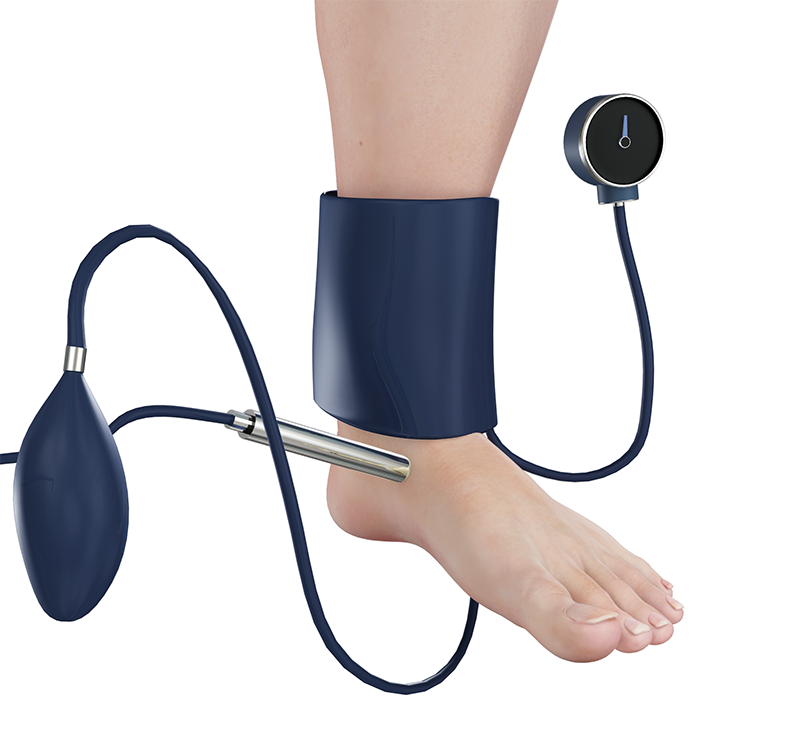What is Ankle Brachial Index?
The ankle-brachial index (ABI) is a non-invasive diagnostic test performed to determine your risk of peripheral artery disease (PAD), a condition of narrowing or blocking of the arteries in your legs or arms. This condition increases the risk of stroke, leads to poor blood circulation, and may cause heart attack and leg pain. The ankle-brachial index is determined by comparing the blood pressures of the ankle and the arm. A low ABI value indicates a narrowing of the peripheral arteries.
What are the Indications of the Ankle-brachial Index?
The ABI test is indicated to determine the severity of PAD. It may also be recommended to check the efficacy of prescribed therapy (medicines, exercise, angioplasty or surgery) for PAD.
How is the Procedure Performed?
Ankle-brachial index test is performed at the doctor’s office and doesn’t require any specific preparation. You will have to lie on the table, your doctor will use a standard blood pressure cuff to measure the pressure in your arms and in two arteries near each ankle. A stethoscope or a hand-held ultrasound device may be pressed on your skin to hear the pulse.

The ankle-brachial index is calculated by dividing the highest blood pressure at the ankle by the highest blood pressure at the arms. The test is sometimes performed at rest and after exercise.
What does Result Suggest?
If the normal value of the ABI test at rest is 1.0 to 1.4, it indicates the absence of narrowed peripheral arteries or blockage of blood circulation. The range of ABI values indicates the condition of arteries as below:
- ABI of 0.9 to 0.99 indicates some narrowing of arteries or starting of PAD
- ABI of 0.8 to 0.89 indicates an early stage of PAD
- ABI of 0.5 to 0.79 indicates more blockage of ankle or leg arteries with leg pain while exercising
- ABI of less than 0.4 indicates severe PAD
- ABI of more than 1.4 indicates stiff arteries
If you are diabetic or have chronic kidney disease, the ABI test measured by the standard procedure may not be accurate due to calcification (hardening) of the arteries. In such patients, measuring blood pressure at the less rigid arteries of the toe may provide more accurate results.



